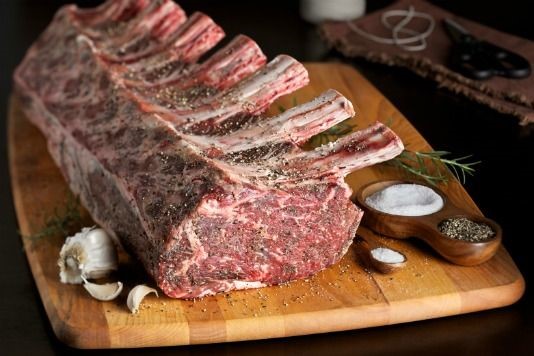The beauty of bones

Really good cooking often starts with bit you don't eat. We look at the many culinary uses of bones
Bones provide structure, not only to the beasts they came from, but to almost every element of the kitchen. There are untold bounties to be drawn from those calcium-rich pieces of skeleton, far beyond a simple stock made from a leftover chicken carcass (though that is indeed a good place to start).
Bone structure
Roasting a joint of meat on-the-bone is still highly lauded over those that have had theirs removed. Whilst bones help conduct heat through the meat, they also keep in moisture, weeping inner juices and broken down connective tissues, injecting savoury depth to the roasted meat. The spent bones go on to produce stocks that provide backbone to countless stews and invigorate the fillings of hearty pies.
To the marrow bone
"I wanted to live deep and suck out all the marrow of life." A thought provoking quote from The Dead Poets Society, alludes to the most delicious and interesting parts of life, being like those extracted from animal bones. A notion I can whole-heartedly support. Roast bone marrow, scraped out and smeared on toast is a humbling, yet incredibly ethereal dish, which leaves me in an almost religious state of awe every time I have it. A dish now internationally revered thanks to Britain’s own Fergus Henderson whose roast bone marrow with parsley caper salad has been replicated by chefs around the world.
Bone marrow is also used to enrich Clipping-time pudding, a regional variation of rice pudding that originates from the Lake District. With the addition of marrow, raisins, currants and cinnamon, the dish was traditionally eaten in Cumbria when it was time for ‘clipping’ the fleeces from the sheep.
Jellybones
The gelatin extracted from boiled bones has provided us with one of the most entertaining and impressive foods of all, jelly. Used for both savoury and sweet purposes, it is known best for its foundation to the Great British trifle and cornerstone to any child’s birthday celebration. After all, what is a party without jelly and ice-cream?
Other uses
There are bones that leave the slaughterhouse destined for different uses. “Under intense heat, rendering plants separate the solid matter from the non-solids, known as tallow.” Explains Stephen Woodgate, Chief Executive of Fabra, “Whilst a lot of the tallow used to go into soap production, nowadays it’s a very small percentage. Most of it is used for fuel boilers and bio diesel, whilst the bone-meal, the solid matter left behind, is used as fuel for power stations.”
The use of bones in china crockery and polished cutlery handles is commonplace. My mother-in-law has a long tea spoon entirely carved from bone. Head bent slightly too far forward, it has served a dependable instrument for scraping every last useable drop from the bottom of awkwardly shaped jars; the spoon that is, not my mother-in-law. Another family traditional was pulling the 'wishbone' whenever mum would serve chicken at the table. My sister and I would snap it in two and wish for Christmas presents, toys and the occasional puppy.
Man's best friend
Finally when the stock is cooling on the stove, the jelly setting in the fridge and the crumbs from marrow on toast cleared away, throw the leftover bone to the dog, he’ll love you forever.
Do you save your bones, and if so, how do you put them to use? Does the thought of roast bone marrow on toast fill you with dread, or leave your mouth watering?
Want more meaty goodness?
Gary Kingshott's skirt of beef
Lucas Hollweg's cold rare roast beef with dill and mustard
Comments
Be the first to comment
Do you want to comment on this article? You need to be signed in for this feature